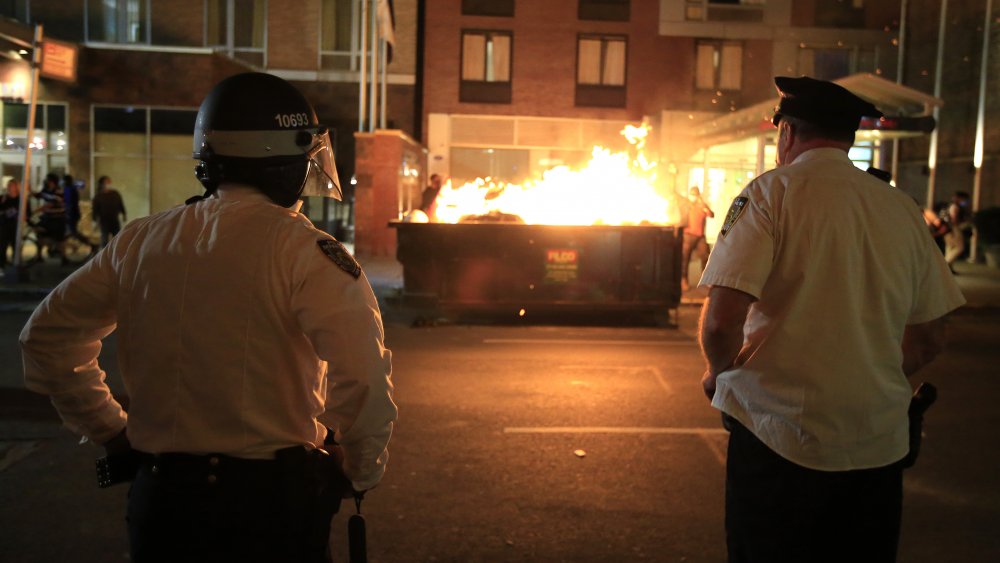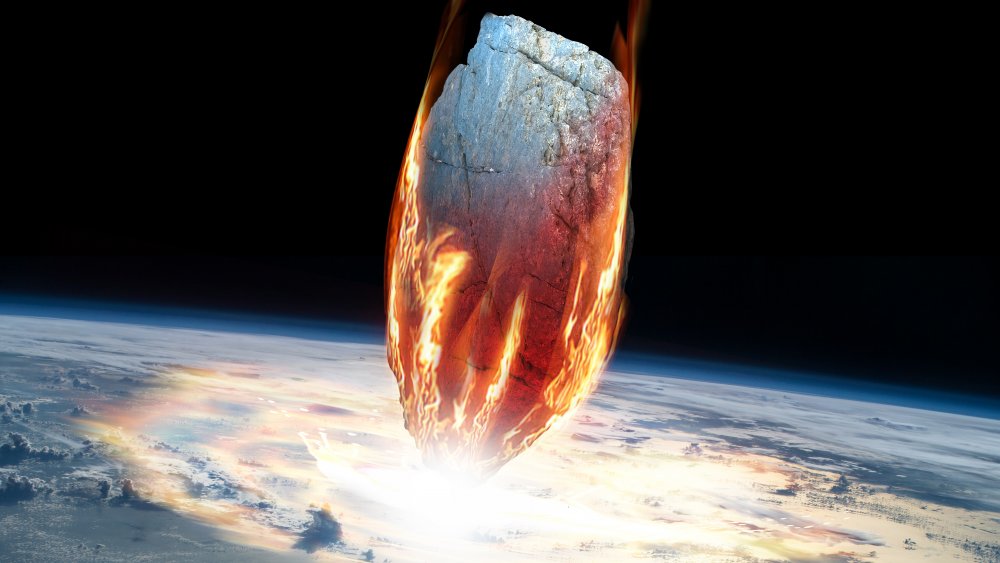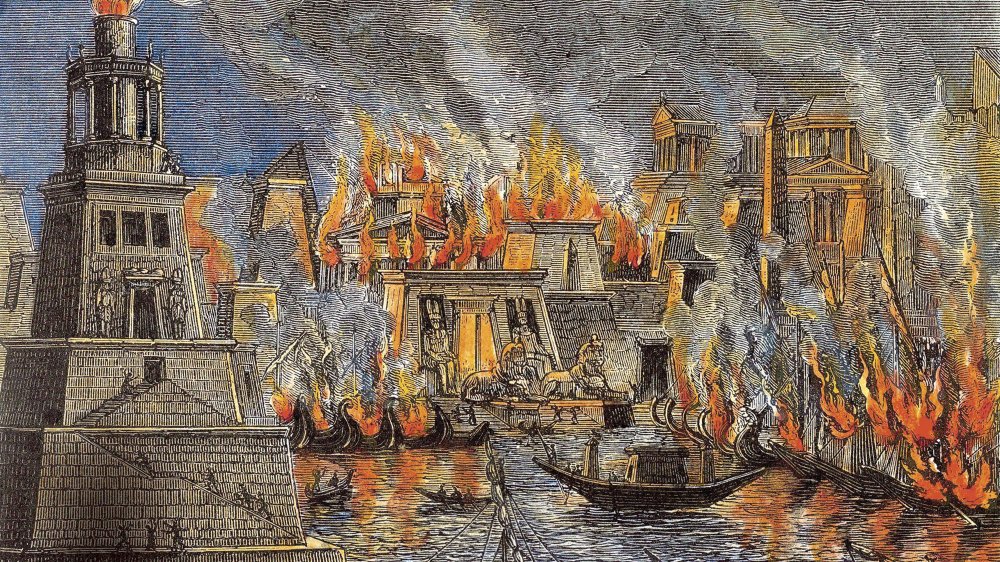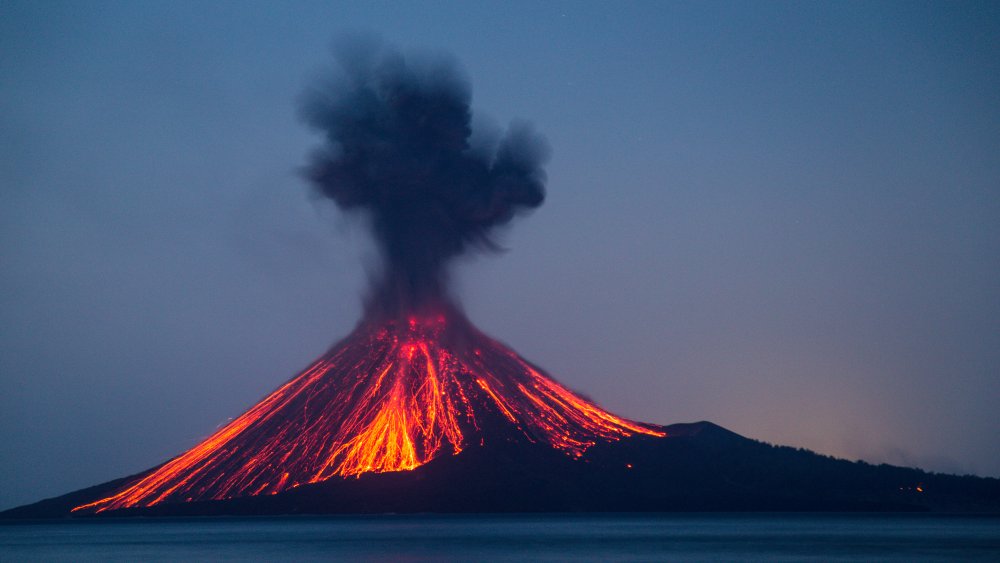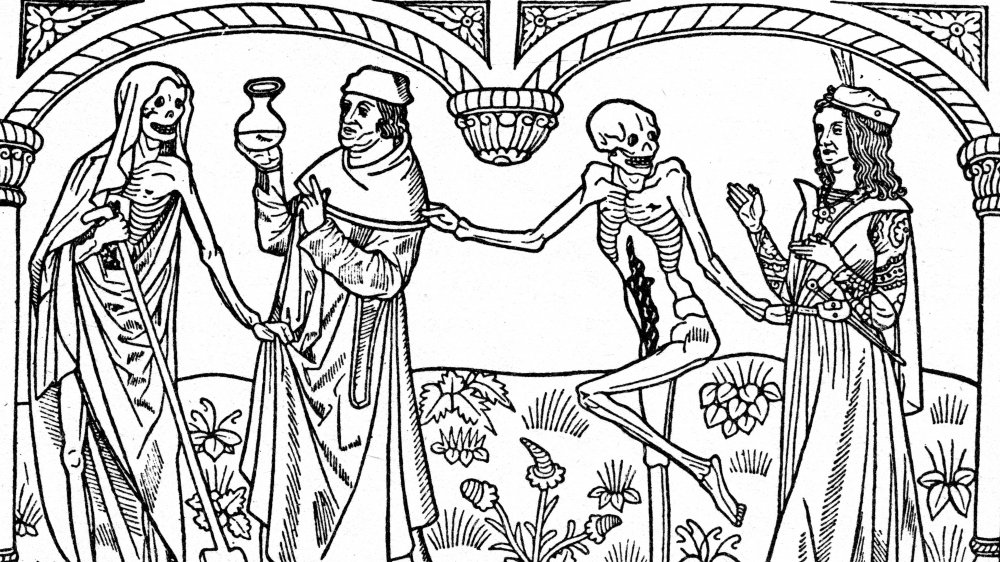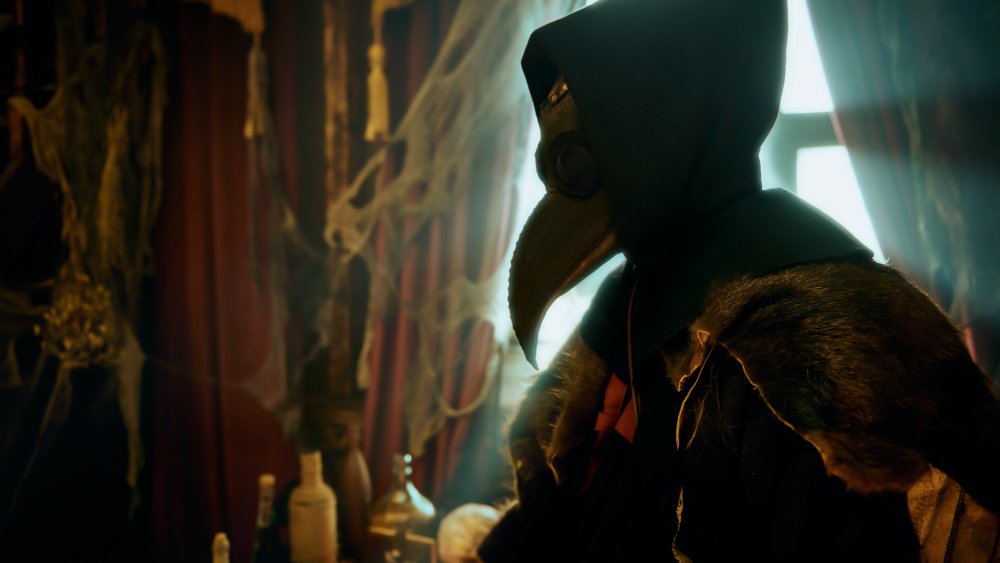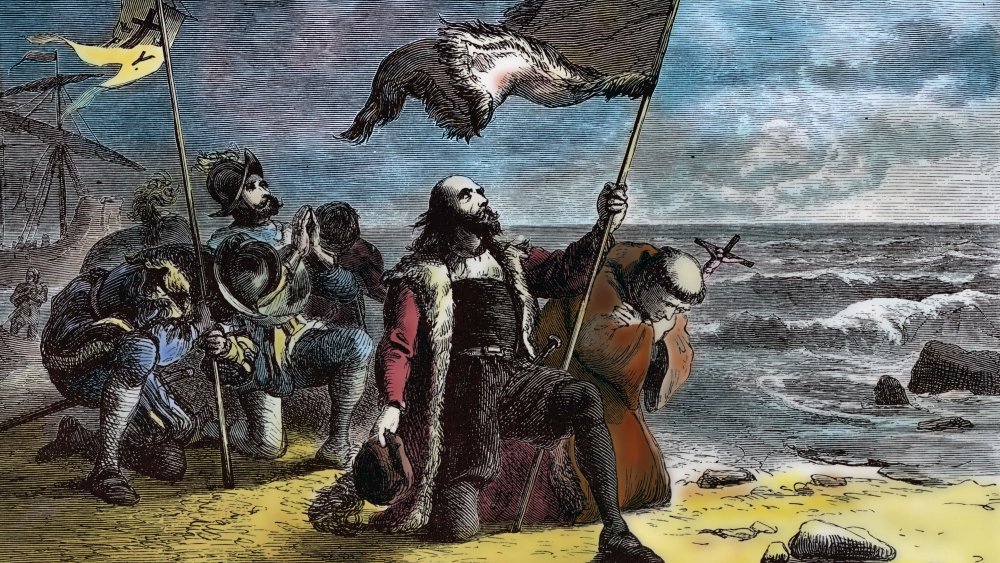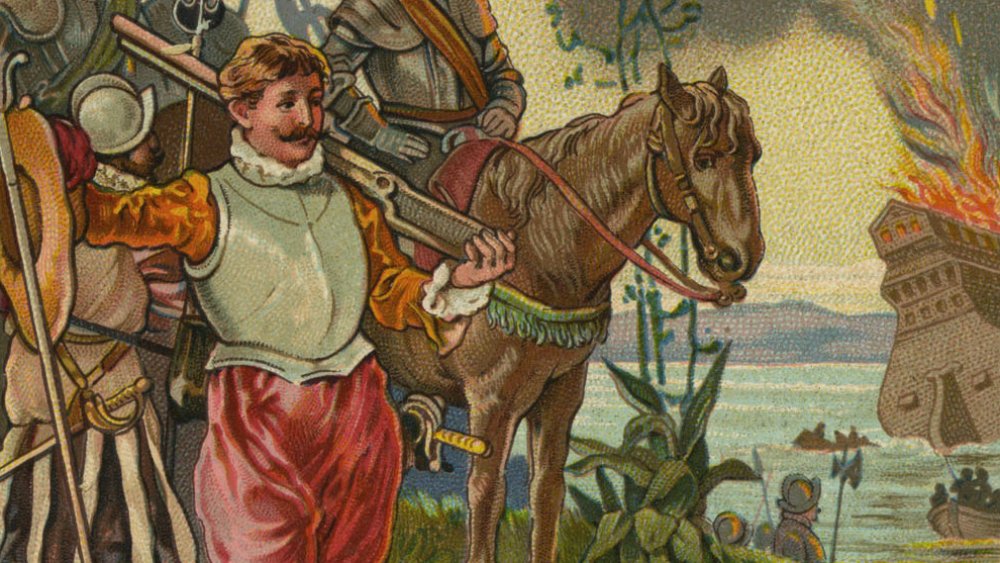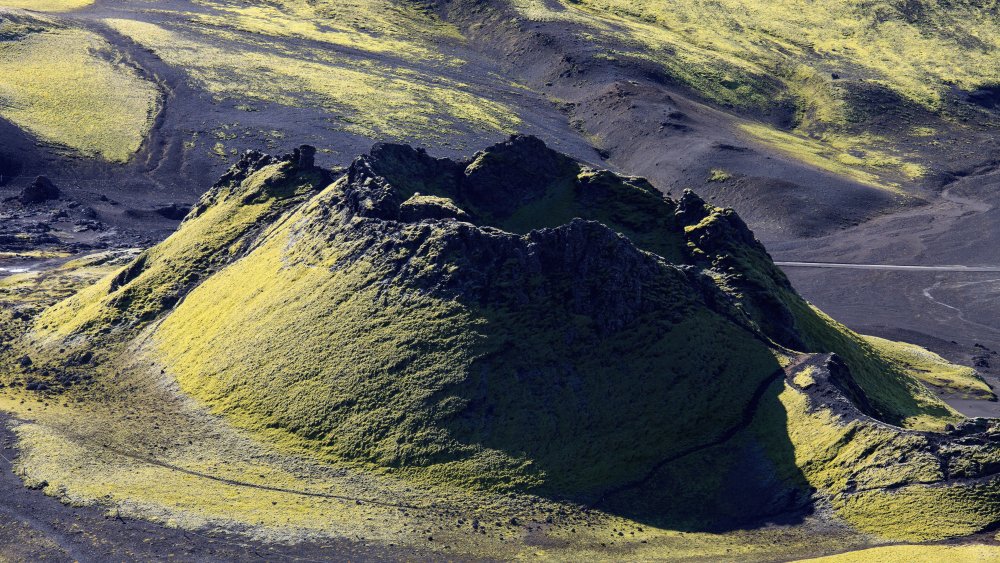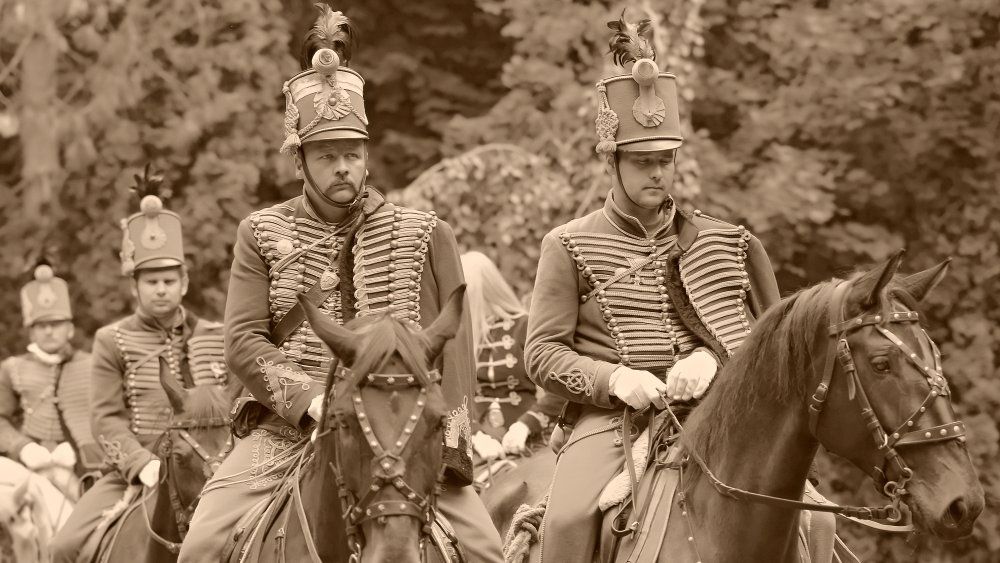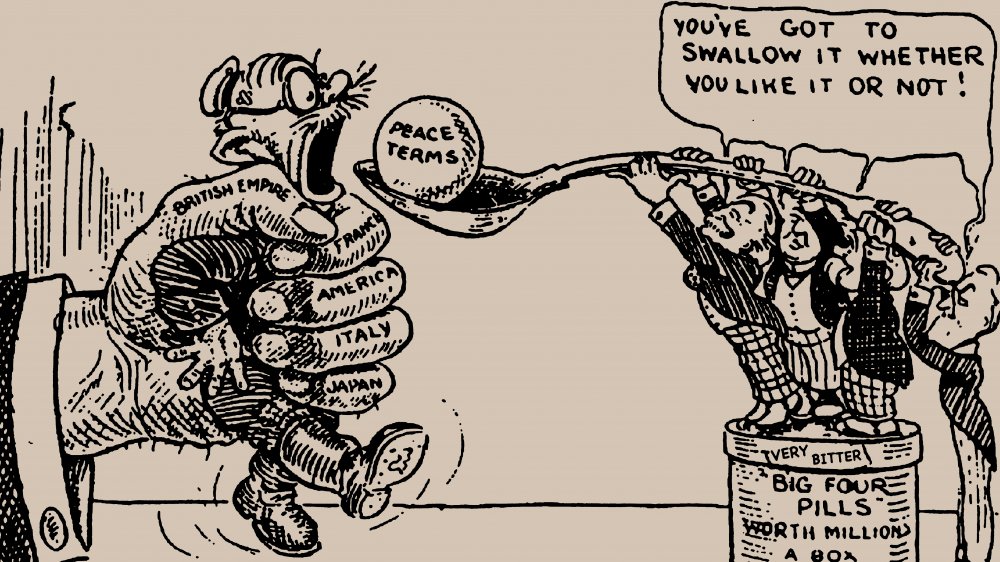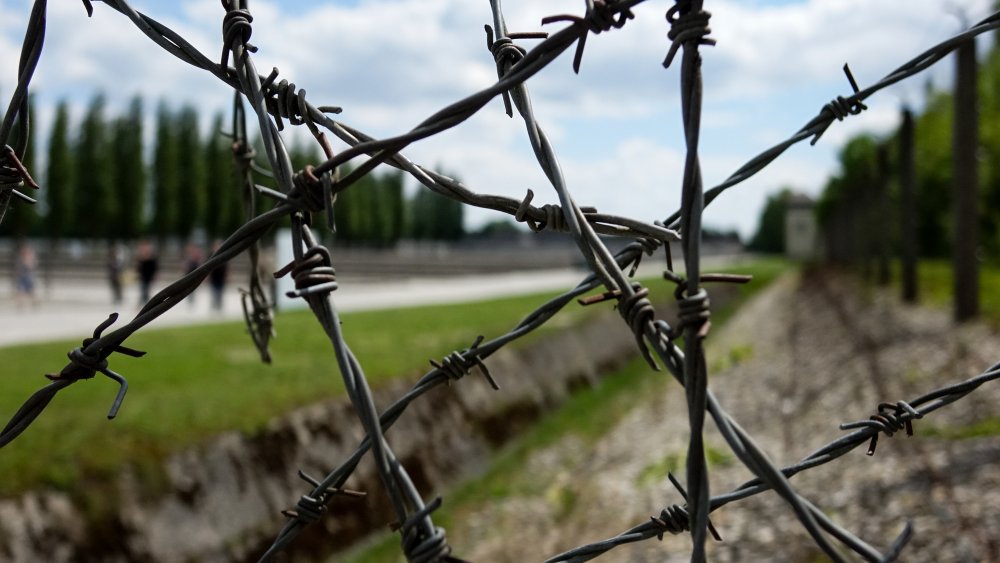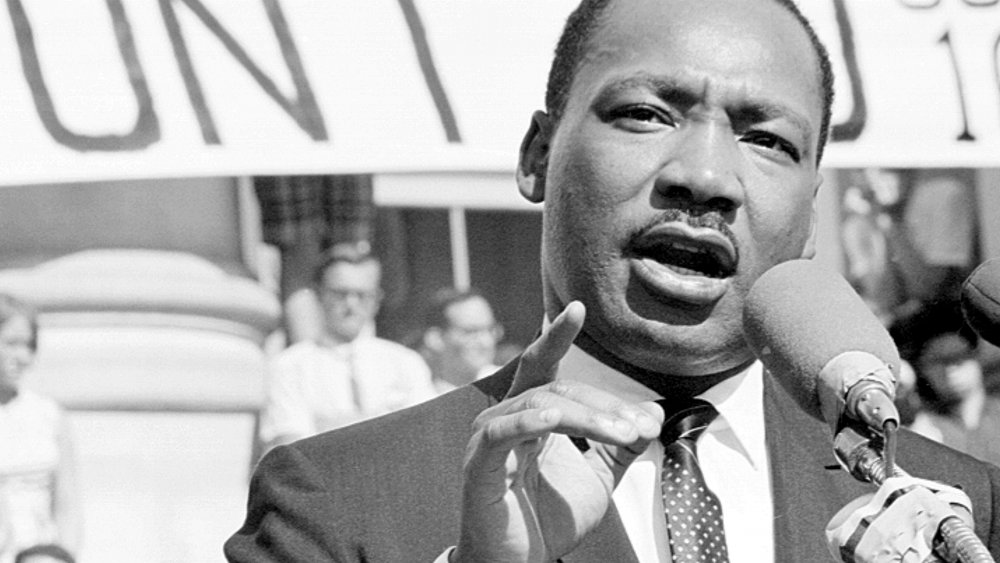The Worst Years In History According To Experts
It really doesn't matter which year we're in. Have a quick glance at the news cycle and it seems like it's completely legit to think, "Well, this has to be it. The worst year in history. Congratulations, humans, you've outdone yourselves."
But is it really the worst? What makes for the "worst" year in history? It's harder to determine than you might expect.
You might think the worst year in history is the one with the most deaths, but that doesn't really narrow things down. There's been a ton of casualty-heavy wars, famines, and natural disasters. After all, a lot of people die — all of the time.
Determining the worst year in history is pretty complicated, and it turns out that picking the "worst" is pretty subjective. Is it the year with the most widespread suffering? The years that saw terrible turning points for the world? Or something else? Here are some of the top contenders for the worst years in history. You decide which calendar year was the most undeniably awful.
66 million years ago: The asteroid collision
This bad year's a little different, in that we don't know exactly when it happened. The closest we've been able to get is "around 66 million years ago... give or take a bit," but what happened was something catastrophic: an asteroid — traveling at around 40,000 mph — hit the Earth in what we now call the Yucatan Peninsula.
According to National Geographic, the impact had the same effect more than 100 trillion tons of TNT would have, and let's put it this way: Terraton says one trillion tons is about equal to 5 billion blue whales, and according to Science, all the man-made stuff on the Earth weighs around 30 trillion tons. How's that for perspective?
The impact kicked off a series of large-scale events that wiped out about 80 percent of life on the planet, and it started with a fireball that killed everything within 625 miles. Geophysicists from Imperial College London and Purdue University put together a simulation that suggests what would have happened next, and most scenarios include 1,000-foot-high tsunamis, seismic activity that would register as a 10+ on the Richter scale, and 600-mph winds that scattered dirt, ash, debris, and — let's be honest — the charred remains of the dinosaurs across the entire planet. Then, the long-term effects of the impact — like muddy rains, darkened skies, wildfires, and the equivalent of a nuclear winter — would have been able to really get to work. A bad year, indeed.
48 BC: The year we destroyed most of the world's literature
According to The Ohio State University, it was Ptolemy I Soter who founded the Royal Library of Alexandra in Egypt around 283 BC. It held an estimated half a million documents from all over the known world, and it also had gardens, a zoo, and space for more than 100 scholars to live, write, and research. That was just the main library — there was also a "daughter" library, housed at the Temple of Serapis.
Just what happened to the library is still debated, but the first person who usually gets the blame is Julius Caesar. In 48 BC, he ordered the harbor and all the ships in it to be set on fire ... and that fire spread to the library. This claim has never been fully substantiated, which is probably why there are other stories of the library's destruction. Another happened in 391 AD when then-ruler Theophilus converted the Temple of Serapis into a Christian Church. In doing so, he probably burned a lot of the contents.
And finally, 640 also gets a shout-out as the year Alexandria was conquered by Muslim invaders, who supposedly burned the texts to heat the bathhouses — and there were so many that it took six months.
Which is true? No one's sure, but certainly, the year that the world lost so much literature and knowledge has got to be up there among the worst.
536: The year of widespread starvation
According to a research team from the University of Nottingham and the Climate Change Institute of the University of Maine (via CNN), the very worst year in history was 536.
The doomed year kicked off a devastating series of events, starting with a volcanic eruption that spewed so much ash into the air that the resulting temperature change led to mass crop failures and widespread starvation.
It gets worse: according to National Geographic, there were two volcanoes that erupted in a short time, with 536 being the first. Another research team traced a volcanic eruption to 539 or 540 and blamed El Salvador's now-inactive Ilopango volcano for piling onto the misery of the years that followed, particularly for the Maya, who suffered massively in the wake of the double whammy.
People were still struggling in 542, and that's when the bubonic plague decided to take advantage of an already weakened world population. That all led to a collapse of the world's economic systems, and more than just a bad year or two — it wasn't until 575 that things started looking a little better.
1314: No amount of cannibalism could make for a good year
Let's go back to 1314, a "worst year" nominee because, according to Historic UK, that's when much of Europe was devastated by floods and famine.
Things really started going bad in the summer of 1314: that's when it rained almost constantly, and the ensuing floods ruined crops. While food rotted in the fields, livestock had it just as bad. Animals starved or drowned in the floods. As food stores emptied and prices skyrocketed, famine set in, as even basics like wheat and salt were impossible to get. According to Medievalists, the flooding was so bad that rising seas swallowed entire coastal communities, sending newly homeless people farther inland to already strained communities.
By the winter of 1315, farmers were forced to eat their seed stocks to make it through the cold months, and without seeds to plant, well, it's tough to grow crops. Stories of cannibalism were widespread by 1316, and fun fact, it's thought that it was about this time that the story of "Hansel and Gretel" came about. It was probably the tale of children abandoned during the famine, who were kidnapped and destined for the dinner plate.
The Great Famine, as 1314 later came to be called, impacted around 30 million people across much of Europe, with areas like Britain and Scandinavian particularly hard hit, thanks to the addition of wars and revolts.
1348: Some eras are infamous for a reason
The 14th century was pretty rough, but 1348 gets a special mention.
It was two years prior, says History, when a particularly deadly strain of bacteria emerged in Mongolia. That might have been the end of the story, but throw in a little warfare (and some very literal throwing of diseased corpses) and it started to spread. Constantinople lost around 90 percent of their entire population in May 1347, and the spread continued its relentless march onwards.
And here's the thing: the first strain of Black Death hit Europe in 1347, too, but things got really, really bad with the arrival of a second strain in January 1348. What followed were layers and layers of terrible.
The Centers for Disease Control and Prevention says that the disease spread fast, and those who caught it had a horrible death to look forward to: there were the buboes and skin sores, followed by vomiting, fever, and chills. It wasn't nice.
Then, in addition to the widespread death, there was also a massive rise in antisemitism, as a conspiracy theory started to spread. Jews, it was falsely claimed, had been poisoning wells and spreading disease. Entire Jewish communities were destroyed by rampaging, violent mobs.
By the time it was over, almost one-half of Europe's population — between 25 to 50 million people — would be dead.
1492: The year Columbus sailed the ocean blue
Most people are familiar with the rhyme: "In 1492, Columbus sailed the ocean blue." And yep, he's one of the things that made this a contender for the worst year in history.
The consequences of Christopher Columbus stumbling on the New World are enough to fill a library, so let's talk about the immediate effects: namely, the Columbian Exchange. This is the idea that Columbus's voyage opened up an exchange between the New World and the Old. While Europeans got awesome things like potatoes, corn, tomatoes, and chili peppers, the New World got a heck of a lot of diseases they had no immunity to.
The list is pretty shocking: according to Business Insider, Columbus brought things like measles, influenza, smallpox, cholera, typhus, chickenpox, scarlet fever, Lyme disease, and whooping cough along with him (and that's just a partial list). It was unspeakably devastating. In Hispaniola, those diseases killed 236,000 people or about 95 percent of the population.
Columbus wasn't the only reason 1492 was one of the worst: it was also the year of the Spanish Expulsion. The uber-Catholic rulers of Spain — Columbus supporters Ferdinand and Isabella — had gotten sick of non-Catholics in their country. According to the Jewish Virtual Library, around 200,000 Jews were told to get out on July 30, 1492. You could also argue that it set a dangerous precedent: Spain told Muslims the same thing about 100 years later (via The Guardian).
1520: The decimation of a civilization
There were a few major events that made 1520 pretty terrible.
Let's talk about the one that happened very, very quickly first: the complete decimation of the Aztecs. When Hernán Cortés left Cuba, it was 1519 and he was heading into Mexico to explore and — he hoped — colonize the Aztec. Cortés and his 500 men landed, and what they found was a vast, powerful empire of around 16 million people. How'd colonization go? Well, according to The Conversation, he took over in 1521 with the help of a smallpox epidemic they'd brought with them. Over the course of 1520, around 40 percent of the entire population of Tenochtitlan was dead. Eyewitness accounts were terrible, with one Franciscan monk recording: "[...] as it was impossible to bury the great number of dead, they pulled down the houses over them, so that their homes became their tombs."
While that was going on in the New World, something else was going on in the Old: Martin Luther was busy breaking Christianity.
In 1517, he published his Ninety-Five Theses against Indulgences. It was his condemnation of the church's habit of making money by selling forgiveness. Luther wasn't excommunicated for his views until 1520 — the point of no return, and the point where the Reformation kicked off in earnest. It created a permanent break in Christianity, with ripples that are still felt today (via History Today).
1783: The year of an 8-month-long volcanic eruption
It started in June 1783: the eruption of Iceland's Laki volcano (of which the crater pictured is all that's left). The eruption lasted for a shocking eight months, and at the time, the world also experienced a surprisingly warm summer. But that's not even the whole story, because according to researchers at Rutgers (via Science Daily), the hot summer wasn't the biggest problem or the result of the volcanic eruption. Rather, it was the unexpectedly cold winter that followed.
The volcano unleashed an insane amount of unpleasantness into the air. For most of 1783, the air over the Northern Hemisphere was filled with "a sulfuric aerosol cloud," which basically meant the world smelled like rotten eggs and breathing gave people all kinds of respiratory problems. There was a ton of acid rain, too. Within the year, more than half of Iceland's livestock were dead, along with 20 percent of their population.
Deaths due to respiratory failure skyrocketed, and according to the Guardian, effects were far-reaching and long-lasting. Ships were stuck in ports, trade stopped, crops died in the fields, and meat spoiled as soon as it was slaughtered. That ultra-hot summer gave way to an ultra-cold winter, and famine was widespread. More people died, and more than that? Famine in Europe was so bad, it was linked to causing 1789's French Revolution.
1848: The year of revolution
In 1848, governments were having a real tough time of it.
Unrest had been boiling for a long time — the 1840s saw Europe drop into an economic crisis that, according to The New York Times, hit the rural and urban poor the hardest. Liberal thinkers, who'd had it with the long-reigning governments, started demanding things like religious liberty and parliamentary rule. Then, they did more than talk.
Riots and revolutions kicked off in earnest, starting in Milan and Sicily. Protests and violent confrontations spread to France, where it got so bad that King Louis-Philippe fled to Britain. That bit of success encouraged German workers to start their own revolts, along with Austria and Prussia. Russia stepped on their revolution before it could really gain momentum, but liberal rebels had all kinds of problems. It turns out that sure, you can demand a unified nation, but what about non-Germans who were living in Germany? Then, Hungary demanded control of Transylvania, but the Romanians who were living there weren't sure what gave them the authority to do that. Things got... confusing.
While the streets of Europe dissolved into violent, bloody clashes between rebels and the military, the old order stepped up, took control back, and not a whole lot got accomplished. 1848's heated rebellions amounted to a downright miserable year of largely pointless violence.
1919: The year of global mistakes
Let's talk 1919. It should have been a good year: World War I ended on November 11, 1918, and it was smooth sailing from there on out, right?
Not quite. Let's start with the Treaty of Versailles, signed in 1919. According to History, it wasn't as well-thought-out as they'd hoped. By putting a massive burden on Germany, the treaty laid the groundwork for German discontent — which would ultimately lead to helping put Hitler into power. Discussions were dominated by the US, Britain, France, and Italy, and at the end of the day, the world found itself under a contract that no one was happy with.
Also in 1919? The third wave of the Spanish flu, a pandemic that had already killed millions, left countless children orphaned, and devastated entire towns.
Not done yet! The summer of 1919 was known as the Red Summer, because of the racially-motivated violence that swept across the US. According to Slate, violence spiked in large part because black soldiers who had fought for their country came home to find friends and family being targeted, falsely accused, and lynched. They weren't going to stand for it anymore.
This was also the same year that Prohibition was ratified, and that didn't work out for anyone. History says that instead of helping the nation chill out, organized crime flourished on a massive scale. Oops.
1943: The worst year of World War II?
Every year during World War II could arguably be one of the worst years in history, but let's talk about 1943. There were a few things going on here. Concentration camps were no longer just holding centers but, instead, became the sites for mass killings, says the United States Holocaust Memorial Museum.
As this happened, there were agreements to increase bombing runs, and fighting pretty much spread worldwide (via Historic UK).
While Winston Churchill was becoming the figurehead of the righteous Allied advance, he was also doing something horrible in India. According to the BBC, his policies of exporting food from India to the warfront and to Britain resulted in large-scale famine, and the deaths of around 3 million people.
Back on the homefront, the US saw an outbreak of race riots. During the summer of '43, white workers in Detroit halted production to protest the fact that their black coworkers had received promotions, and things spiraled into riots that were met with 6,000 army troops (via the Detroit Historical Society). In August, a similar riot kicked off in Harlem, says Baruch College.
It was also the peak of another kind of homegrown racism: America was busy confining Japanese citizens into internment camps, a decision History calls one of the biggest violations of civil rights in the country's history.
1968: Definitely not the Summer of Love
The Summer of Love refers to 1967 and the embrace of the hippie culture, says The Guardian. But fast-forward just a single year, and you come to the year that The Atlantic calls the worst in modern history.
Why? We'll start with the assassinations: 1968 saw the deaths of both Martin Luther King, Jr. and Robert F. Kennedy. Had either or both of those men not died that year who knows what the world would look like today.
It's the same year that the Vietnam War was at its peak, and according to the Selective Service System, 296,406 entered into military service that year (more than surrounding years, save 1966). Average how many died throughout the year, and that clocks in at around 50 a day. In February, the Viet Cong launched the Tet Offensive, and just the following month, there was another brutal headline: US troops had been involved with the My Lai massacre and the mass slaughter of civilians.
What else? Desegregation protests and the Orangeburg massacre, which left three dead and dozens wounded after a confrontation between black citizens and police. Riots broke out in more than 100 cities, and politics was a mess. The fated year of 1968 ended with the election of Richard Nixon as the country was quite literally on fire.
